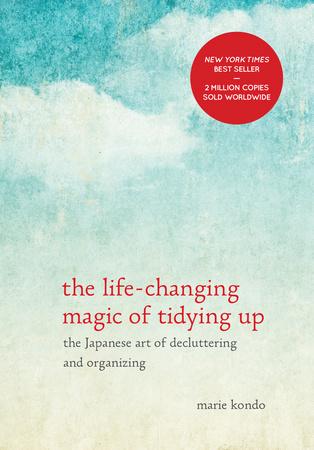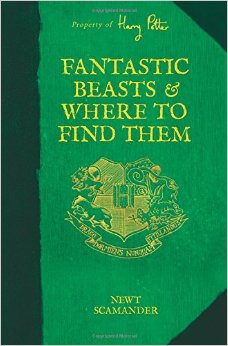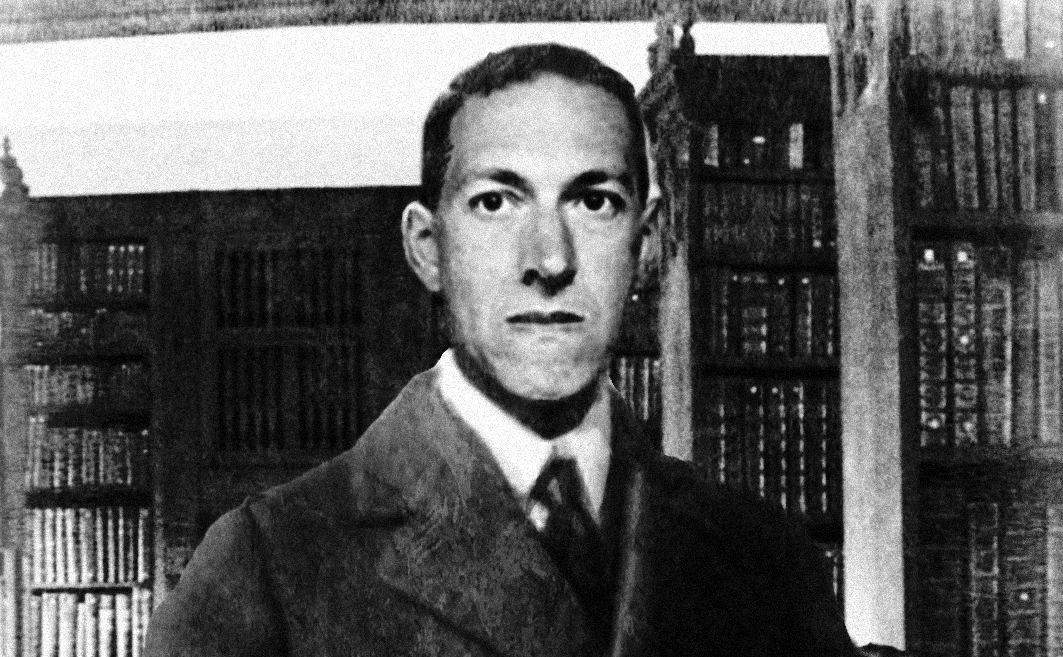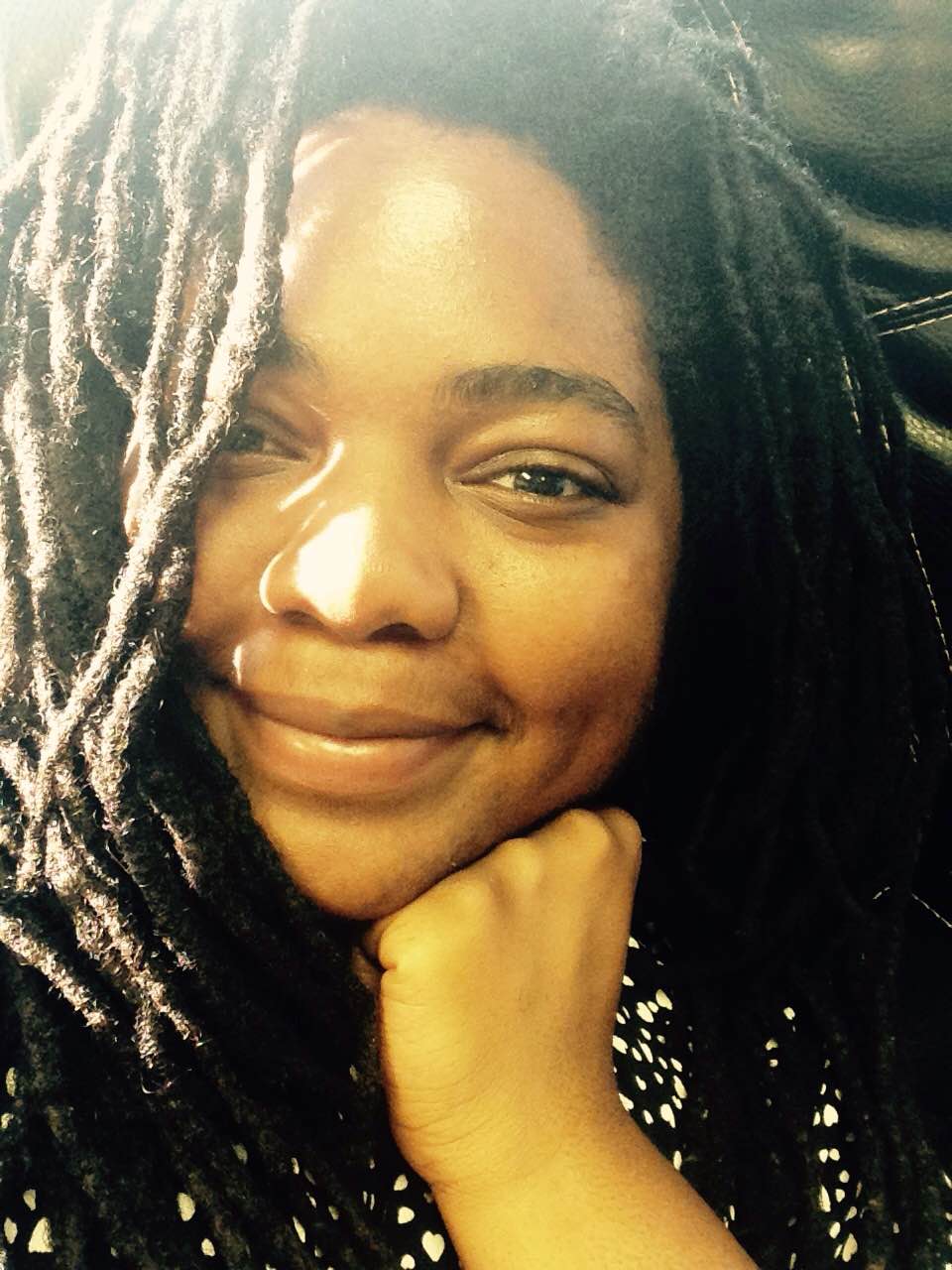While the design of book spines occupies interesting and unique territory in the world of books, perhaps no one is as invested in them as booksellers and librarians, who look at thousands of them every day and use them as vital tools for locating mis-shelved books. Some spines we admire aesthetically are pragmatically confounding.
Recently, I was looking for It Ain’t So Awful, Falafel on my bookshelf. People generally scan items to sort first by color, then by other information like text (unless the title is giant and bold and thick and highly contrasted on the spine, in which case it can catch our eye before color). Remembering that the cover is yellow, and the book is thick-ish, I scanned in vain for a medium-thick yellow YA spine.
Continue reading
The 2016 Best New First Day of School Book Award
Kenny Brechner - August 25, 2016
 The first day of school is all about embracing new possibilities, experiences and friends. Yet when we are compiling our back-to-school displays at the bookstore our thoughts go to old favorites. We cling to familiarity, which is always a danger in life. Isn’t it true, after all, that some of those favorites were themselves winners of our Best New First Day of School Book Award, such as last year’s winner, Steve Raised by Wolves, or the 2014 champion Edda? How are we to avoid the disgraceful irony of reaching only for past favorites for books on a topic such as the first day of school, which is all about embracing new possibilities?
The first day of school is all about embracing new possibilities, experiences and friends. Yet when we are compiling our back-to-school displays at the bookstore our thoughts go to old favorites. We cling to familiarity, which is always a danger in life. Isn’t it true, after all, that some of those favorites were themselves winners of our Best New First Day of School Book Award, such as last year’s winner, Steve Raised by Wolves, or the 2014 champion Edda? How are we to avoid the disgraceful irony of reaching only for past favorites for books on a topic such as the first day of school, which is all about embracing new possibilities?
The answer to solving that difficulty lies in this year’s winner. Not only is Pat Zietlow Miller’s Sophie’s Squash Go to School completely worthy of any former champion it will spend time with on back-to-school displays, but its theme is none other than overcoming our attachment to the familiar and our consequent resistance to new experiences.
Continue reading
The Art of the Deal at the Bookstore
Josie Leavitt - August 23, 2016
There is something adorable about watching kids try to get their parents to buy them books. Often, families will come for gift buying, not personal buying, or a child has been told that they can only get one book. Children don’t always understand these strictures, or they don’t really believe them. Every day, I watch kids try to finesse their parents and get books. And I’m a very happy accomplice at times. Continue reading
The Life-Changing Magic of Tidying Up… the Bookstore Basement
Elizabeth Bluemle - August 22, 2016
 We at the Flying Pig, like most of the clutter-bound world, *love* Marie Kondo’s brilliant little bestseller, The Life-Changing Magic of Tidying Up. Kondo’s approach is so simple it’s foolproof: put your hands on everything, keep what sparks joy, and give the rest of your stuff a new life elsewhere. Care gently for what’s left, give it space and appreciation, and you will have a restful, clean, happy space around you.
We at the Flying Pig, like most of the clutter-bound world, *love* Marie Kondo’s brilliant little bestseller, The Life-Changing Magic of Tidying Up. Kondo’s approach is so simple it’s foolproof: put your hands on everything, keep what sparks joy, and give the rest of your stuff a new life elsewhere. Care gently for what’s left, give it space and appreciation, and you will have a restful, clean, happy space around you.
Obviously, there’s more to the book and philosophy than outlined above, but the tenets above are at the heart of the book, and several of us on staff have, if not completely transformed our living spaces, at least made many changes in our homes as a result of this little book. I couldn’t help thinking of Marie Kondo as five staff members and I delved into the basement storage at the bookstore. We should appreciate this space; it’s almost as large as our store. But of course that’s a bit of a curse as well as a blessing, since it allows us to accumulate and save items we really should be dispatching. Continue reading
Recommendation Challenges for Seasonal Customers
Josie Leavitt - August 19, 2016
I love summer at the bookstore. Every day tourists come in and marvel at the store and our selection. What I particularly enjoy are my returning customers. The ones who love Vermont and our store. They might only come once a year, but these folks look forward to their visit. And it surprises me how many of them I remember from year to year. One family came in the other day and proudly announced, “This is the twentieth year in a row we’ve been coming to your store!” Continue reading
Book People’s Bookcases: A ShelfTalker Shoutout for Photos
Kenny Brechner - August 18, 2016
I have had an inspiring, aesthetic vision. It was of a ShelfTalker post that shares great photos of the favorite personal bookcases or shelves of booksellers, authors, librarians or publishing professionals. That’s where you come in. Each photo needs to be around 640px wide. It should come with a very brief description of why you love that particular bookcase. To give you a sense of things, here are a few examples.
Continue reading
When Books Spur Action
Josie Leavitt - August 17, 2016
I had a very hard time learning how to read. I struggled with decoding words and found myself yearning to be able to read a book the way my friends did. After a year with a reading teacher, I finally figured it out and could read somewhat easily. The struggle with reading meant that first real chapter books I read have really stayed with me. Among those books was The Great Brain, with its old-timey feel of two brothers who are up to no good. Continue reading
A Phenom of Authors
Elizabeth Bluemle - August 12, 2016
What a day! It began with one of our favorite kinds of events and ended with a friendly invasion of visiting authors.
Our morning kicked off with the charming Liz Starin and her musician husband, Avi, who came to the Flying Pig to celebrate Liz’s picture book Splashdance, “a social justice tale of interspecies water ballet.”* (*That fabulous one-line description came from one of the bookstores Liz visited.) It’s about a polar bear who adores synchronized swimming and looks forward to the annual competition — only to find out that the pool has a strict “No Bears” policy. When her (human) swimming partner, Marco, proves himself to be a fickle friend who immediately chooses a new partner, Ursula is crushed — until she meets an enthusiastic and resourceful group of animals at the local pond, who hatch a bold plan. The book is exuberant, joyful, and sly, hitting all the right notes for its young readers.
Continue reading
The Strange Disappearance of ‘Fantastic Beasts and Where to Find Them’
Kenny Brechner - August 11, 2016
Why was that a good idea? That was the question I asked myself when I first found out. Hold on a minute, I better back up a bit.
The matter in question, with all its dark irony, began when a 10-year-old girl came in with her mother. Mom  was browsing up front and I noted that the girl was on an important mission. I asked her what it was. She was looking for copies of Quidditch Through The Ages, Fantastic Beasts and Where to Find Them, and The Tales of Beedle The Bard. “Ah,” I said. We have the goods. I walked over and handed her Quidditch and Beedle. I noticed that Fantastic Beasts was not on the shelf though. I told her I needed to see if we had any in overstock. “Mom,” she yelled out, clutching the two books like they were a beloved terrier who had almost run out into the road, “they’ve got them.” Mom came over. I rallied back round to break the news that we were out of stock.
was browsing up front and I noted that the girl was on an important mission. I asked her what it was. She was looking for copies of Quidditch Through The Ages, Fantastic Beasts and Where to Find Them, and The Tales of Beedle The Bard. “Ah,” I said. We have the goods. I walked over and handed her Quidditch and Beedle. I noticed that Fantastic Beasts was not on the shelf though. I told her I needed to see if we had any in overstock. “Mom,” she yelled out, clutching the two books like they were a beloved terrier who had almost run out into the road, “they’ve got them.” Mom came over. I rallied back round to break the news that we were out of stock.
“Can I order you a copy?”
“Sure. It’s awesome to have these. I’ll come in as soon as Fantastic Beasts is here.”
Mom nodded and I got their info and put in the special order. Everyone was happy. The first sign that something was amiss came in the purchase order confirmation the next day. I noted that her order, along with two more copies of store stock, had not picked up. I knew my young customer was expecting her copy by Friday so I cross referenced the stock status on ipage. This is what I saw.
 All right, the $9.99 little green hardcover was discontinued and a $12.99 replacement edition wasn’t coming out until March 14, 2017. An ominous thought took hold of me. I checked other wholesalers and found the same info, along with no loose copies to grab. The Fantastic Beasts screenplay edition was coming out in November. I recalled Lovecraft’s words. “The most merciful thing in the world, I think, is the inability of the human mind to correlate all its contents. We live on a placid island of ignorance in the midst of black seas of infinity, and it was not meant that we should voyage far.”
All right, the $9.99 little green hardcover was discontinued and a $12.99 replacement edition wasn’t coming out until March 14, 2017. An ominous thought took hold of me. I checked other wholesalers and found the same info, along with no loose copies to grab. The Fantastic Beasts screenplay edition was coming out in November. I recalled Lovecraft’s words. “The most merciful thing in the world, I think, is the inability of the human mind to correlate all its contents. We live on a placid island of ignorance in the midst of black seas of infinity, and it was not meant that we should voyage far.”
Could it be that these three pieces of information were all connected? Was it possible that the November publication of the screenplay had resulted in the deliberate suppression of the original book until well after the movie had run its course next year? I put in a call to Scholastic to find out. It turned out that my foreboding was accurate. Legal considerations regarding the screenplay edition had been brought to bear to the effect that the original edition of the book had been taken off the market until next March.
 Why was that a good idea? That was the question I asked myself. It made no sense to me. I would totally have understood replacing the $9.99 edition with a fancier one, but to remove it from the market? I think tons of them would have sold in the run up to the film and that those sales wouldn’t have impacted the sales of the screenplay edition much if at all, and at what price were those extra sales being manufactured? Keeping a book in hardcover to capitalize on a movie can be mercenary at times, but the book is still available. The suppression of a narrative version of a book that has already been in circulation in order to compel sales of a screenplay edition is a very different story. It’s a customer service nightmare and booksellers are the ones who are going to be left to explain it in person to their customers. The upshot was all negative and no positive. How was disappointing a 10-year-old girl a good idea? Lovecraft was right: “some day the piecing together of dissociated knowledge will open up such terrifying vistas of reality, and of our frightful position therein, that we shall either go mad from the revelation or flee from the deadly light into the peace and safety of a new dark age.”
Why was that a good idea? That was the question I asked myself. It made no sense to me. I would totally have understood replacing the $9.99 edition with a fancier one, but to remove it from the market? I think tons of them would have sold in the run up to the film and that those sales wouldn’t have impacted the sales of the screenplay edition much if at all, and at what price were those extra sales being manufactured? Keeping a book in hardcover to capitalize on a movie can be mercenary at times, but the book is still available. The suppression of a narrative version of a book that has already been in circulation in order to compel sales of a screenplay edition is a very different story. It’s a customer service nightmare and booksellers are the ones who are going to be left to explain it in person to their customers. The upshot was all negative and no positive. How was disappointing a 10-year-old girl a good idea? Lovecraft was right: “some day the piecing together of dissociated knowledge will open up such terrifying vistas of reality, and of our frightful position therein, that we shall either go mad from the revelation or flee from the deadly light into the peace and safety of a new dark age.”
How was I going to explain this to my 10-year-old customer? That was going to be a fun phone call. Fantastic Beasts and where to find them? Where to find them indeed!
Black Books for Black Kids
Elizabeth Bluemle - August 9, 2016
A few weeks ago, I invited POC booksellers to be guest bloggers for ShelfTalker, and to write about any aspect of bookselling for children they wanted to address. Bookseller Alia Jones from Blue Manatee in Cincinnati was the first bookseller to respond, with this post. We are delighted to welcome Alia to ShelfTalker. Take it away, Alia!
***

Cincinnati children’s bookseller, Alia Jones of The Blue Manatee.
I’m black and I sell books. Kids’ books at that. I sell the books that are full of whimsy.
They’re the books that spark creativity, imagination and wonder. When a customer walks into my store, I’m ready to help them fall into a great story.
Recently, a black couple visited my store and I noticed they were picking up books that feature black girls, so I handed them a few more. As I checked them out, we briefly discussed the need for more diversity in children’s books and the woman said something that has stayed with me. She said, especially these days, our children need to see themselves in books.
And so I started to really think about the role I play in providing positive images of blackness. Especially since black men and women are being hurt and killed by the police at an alarming rate and nothing is changing. It’s physically and emotionally draining to live with violence and racial injustice. I can only imagine what black children are feeling, the questions they’re asking their loved ones and teachers and how they’re coping.
Self-care is crucial. Books can heal and empower.
When I see a bad-ass black woman in a book, TV show, or movie, I get a boost. When I read about a bad-ass black woman in history, a smile spreads across my face. When I listen to our First Lady, Michelle Obama, I think, “She’s like me.” Mirrors and role models are important and representation matters. Diverse books can be a balm; a balm that helps children of color and native kids cope with loneliness, fear, self-doubt and anger. They’re also a boost of confidence!
Black kids, infants to teens, need all the images of shining black faces they can get right now so let’s give them excellent stories. Black kids deserve to have stories where they’re adventurers, scientists, veterinarians and sleuths too. Historical books are necessary but we need more books with carefree black kids. Some argue that race shouldn’t matter when reading a book; if you’re enjoying it, you’ll connect to the story and characters regardless.
Children of color and native kids don’t have the privilege of a long history of books written for and about them and there’s nothing wrong with wanting to read about someone who looks like you. Publishing houses are signing and hiring a few more minorities and putting a few more non-white faces on books, but parents, teachers, librarians and booksellers know how urgently diverse books are needed. Powerful movements like Step Up Scholastic are telling us how dire this situation is. Kids also need #ownvoices. Black kids are surprised and inspired when they meet black authors because they don’t expect them to be black. What does that tell you? I’ll say it again, representation.
While we work towards providing more diverse books for children of color and native kids, let’s be sure to read, teach, recommend, and sell them to white kids as well. This is how we build a better world. I’ve noticed that many white kids don’t care if a book has a non-white person on it; they’ll pick it up as long as it looks fun. Usually adults are the ones who carry biases and are “gatekeepers.” On several occasions I’ve recommended a book, per the customer’s specifications, that happened to feature a child of color or native child, only to find it didn’t make it to the checkout.
Books help us expose children early to cultural diversity. These “windows” teach respect and nurture open-mindedness. I like to highlight and “face-out” diverse books in my store because making an effort to do this not only exposes customers to new books but can also help them feel more comfortable. Many non-white customers enter bookstores expecting not to find a lot of books that feature people like them. Children’s booksellers, regardless of their race, should have at least a basic knowledge of quality diverse children’s books. If you can recommend children’s “classics” but can’t put at least four good books that feature black kids (that aren’t about slavery!) into a customer’s hands, that’s a problem. Provided a bookstore has the inventory (I’m looking at you, book buyers!) and booksellers have the knowledge and desire to help, good diverse books should get good homes. I’ve seen too many booksellers freeze up when asked about diverse books.
Compared to thirty years ago, we’ve certainly come a long way in the quantity and quality of diverse books. That being said, we still have a long way to go. We need more diverse authors and their stories. Because children need these rich resources, if traditional publishing routes aren’t working, writers, please self-publish! If you decide to self-publish, please make sure your book has an ISBN and barcode so that bookstores can seriously consider your books.
As a black bookseller, I’m asking for more diverse books so I can better serve my customers, so I can send them home with treasures and so I can show black kids how much they’re loved.
Sankofa is a word in the Twi language of Ghana that means “Go back and fetch it.” I like to think back to formative books from my childhood that showed me reflections of myself. I grew up loving Mufaro’s Beautiful Daughters by John Steptoe for its lush depictions of blackness and kindness. I connected to Addy from the American Girl series because she was black like me and was a snapshot of my ancestors.
Because I love sharing good books, here are five more excellent black books that I hope you’ll enjoy (and recommend).
1) The Stories Julian Tells by Ann Cameron/Illustrated by Ann Strugnell
– Do cats really come from a catalogue and help you plant your garden? Black boys dream in this magical beginning chapter book.
2) Marvelous Cornelius by Phil Bildner/Illustrated by John Parra
– Already a pillar of his community, a singing and performing trash man becomes a hero during Hurricane Katrina.
3) Drum Dream Girl by Margarita Engle/Illustrated by Rafael López
– Millo, an Afro Chinese Cuban girl in 1930s Cuba, is determined to drum despite what everyone thinks.
4) Little Melba and Her Big Trombone by Katheryn Russell-Brown/Illustrated by Frank Morrison
– Melba Doretta Liston, a musical genius from Kansas City, grew up with music in her blood and rocked the jazz world!
5) Ten, Nine, Eight by Molly Bang
– A black girl and her father get ready for sleep. This is a beautiful counting book and display of black family and love.
***
Alia Jones attended Cornell University for Cultural Anthropology and after graduation flew to South Korea on a Fulbright to teach English. After returning to the US, she became a children’s bookseller and enjoys reviewing and blogging about diverse books. You can find her blog here: readitrealgood.com.
